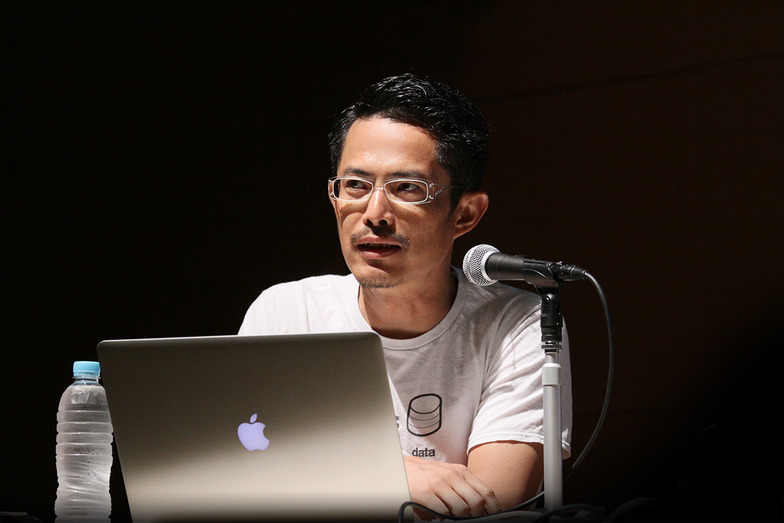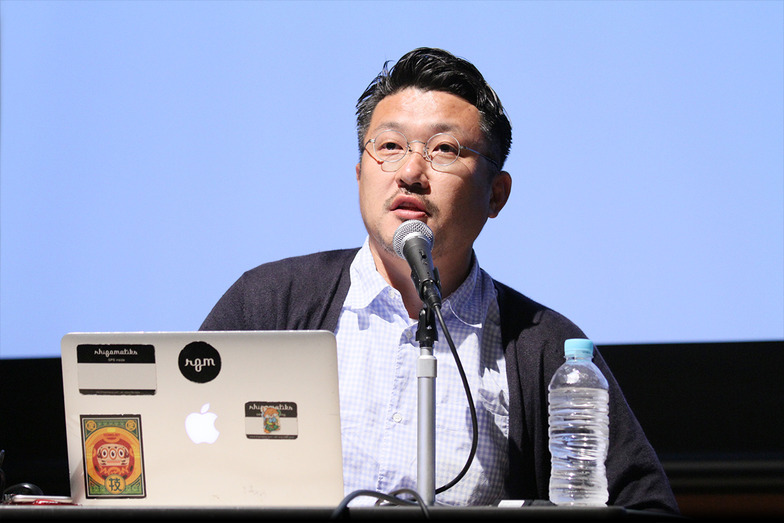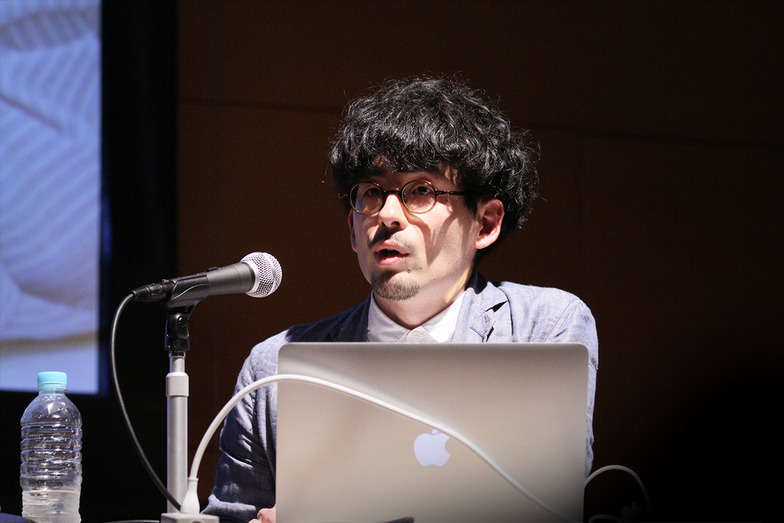As an IoT-enabled society becomes increasingly realized, cross-disciplinary work is accelerating rapidly within the field of architecture. The pervasive digital network has finally infiltrated and integrated with the realms of space and architecture. Consequently, the architect's role is shifting from conventional building, structural, and design work toward more organic expression and collaborative creation with professionals outside the industry. This Design Talk featured Seiichi Saito, who founded Rhizomatiks after working as an architect and launched the architecture division "Rhizomatiks Architecture" following diverse business experiments using art and technology, and Keisuke Toyoda of noiz architects, who is gaining prominence as a leading figure in "computational architecture" based in Japan and "Rhizomatiks Architecture." Dentsu Inc. Event & Space Design Bureau's Yu Nishimuta hosted the discussion on the theme "Adaptive Architecture," exploring visions for the future. This is presented in two parts: Part 1 and Part 2.
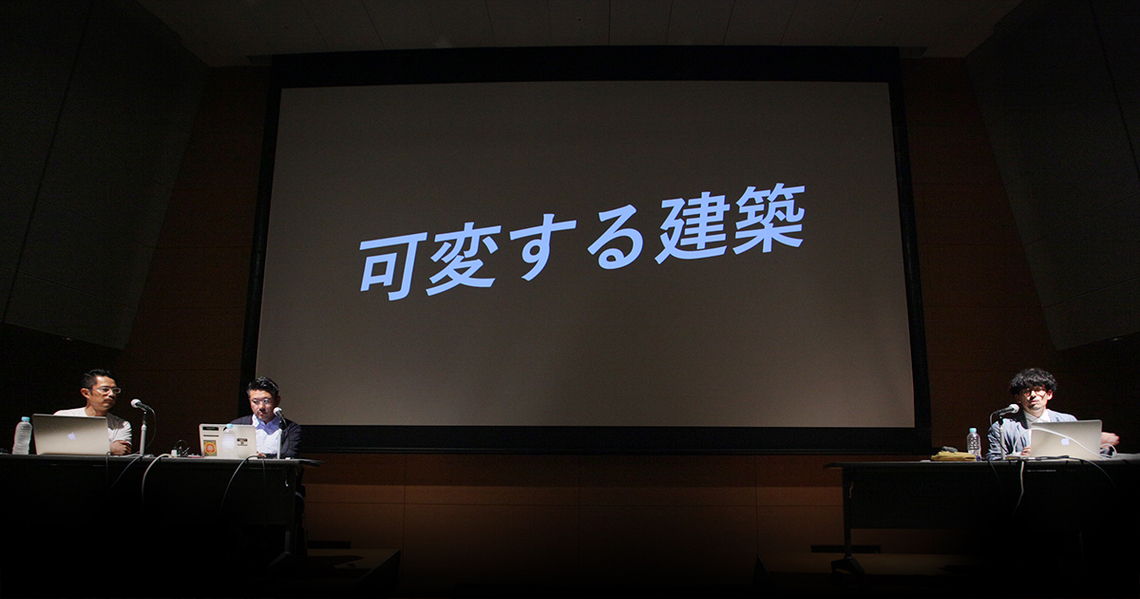
(From left) Mr. Toyoda, Mr. Saito, Mr. Nishimuta
What is the appropriate form of "architecture" for the digital age?
Nishimuta: Mr. Toyoda of noiz architects (hereafter noiz) and Mr. Saito of Rhizomatiks are actually senior and junior classmates from Columbia University's Graduate School of Architecture, Planning and Preservation. Mr. Toyoda, who keeps architecture as his core while expanding into art and information design, and Mr. Saito, who focuses on media art and advertising while extending his reach into architecture and urban design. By crossing the visions and design approaches of these two, we hope to find hints for the design demanded in the coming era.
Toyoda: noiz is an eclectic architecture firm that conducts multifaceted experiments and demonstrations exploring how digital technologies transform architecture and its surrounding environments. Since today's theme is "Variable Architecture," let's start with a straightforward example where "the building itself moves." It's called "FLIPMATA," a project that created a new interaction between the city and its people. It features a facade > facade installed on the window walls of a Taiwanese building that picks up the sounds of the city and moves interactively.
Taiwan has a law requiring 1% of public works budgets to fund public art, and this project was created within that artistic framework. For over 3,000 years, architecture was considered static and fixed, simply because there were no other technical options. But now that we have the technology to create and control moving buildings, architecture can transcend three dimensions. Just as it's natural for human minds and bodies to change with their environment, I believe architecture should also be able to change according to mood and surroundings.
Computational design emerged in the 1990s while we were at Columbia University. At the time, it was said to be achievable only within computers. But with the advent of digital fabrication in the 2000s, complex data could be output directly as complex shapes. Then, in the 2010s, it became possible to interactively generate forms while receiving feedback from the external environment. This brought up real-world problems like where to source the data and how to implement sensing. A perspective is needed on how to handle diverse elements like structure, funding, and cost as complex dimensions akin to space itself. I feel the designer's domain is indeed beginning to shift in that direction.
Historically, I believe architects have always conceptualized things in higher dimensions within their minds. However, the means to objectively share this with others were limited to two-dimensional drawings or three-dimensional models. Therefore, to communicate intent, they had to downgrade the inherently high-dimensional design. But recent advances in digital technology now allow us to directly process and output high-dimensional information as models. We can even sense this in the real world, feed it back, update the data, and output it again... all in real time. Architecture and manufacturing are fundamentally changing.
Given this situation, we are proposing a new academic field called "Architectural Informatics" to the architectural community. The existing classifications of the architecture industry—such as "design," "structure," "facilities," and "environment"—are insufficient to fully realize the possibilities of our era. When information technology permeates across these fields, how should we conceive of architecture and urban planning? To research this, we established the "EaR" department within noiz. Furthermore, we are preparing to launch a separate company within the next two to three months dedicated to connecting new technologies like AI with architecture.
Nishimuta: I found the Taiwanese facility with its moving facade novel because it responds to feedback from the city and the people moving within it. It also served as inspiration for today's theme of "adaptive architecture." Next, we'll hear from Saito.
Saito: For me, the first advertising campaign I created with an architectural mindset by shifting my perspective was KDDI's "FULL CONTROL TOKYO." It was conceived around the idea that hacking the city through computer control might reveal new forms of expression and new ways to enjoy the city. However, advertising campaigns are often short-lived. What we create doesn't remain in the world. Eventually, I began wondering if there wasn't a way to leave the money spent on advertising in the city itself. Amid this ongoing struggle, I decided to return to my roots in architecture and conceived the exhibition "Architects Who Never Became Architects." People with an architectural background tend to think logically; they're often described as "people who can use language and math." This exhibition features diverse individuals—like bicycle makers, urban planners, and rappers—but what I found fascinating was that each retained this logical thinking precisely because of their architectural background.
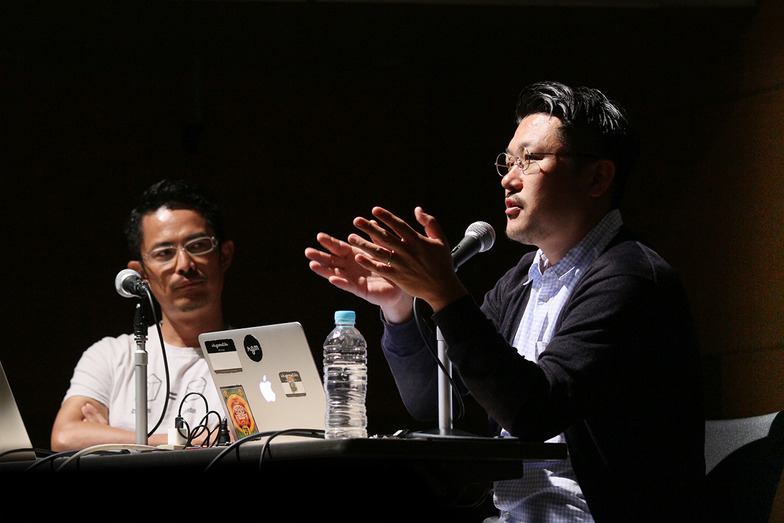
Saito: This exhibition inspired me to eventually create an architecture division within Rhizomatiks. Starting this year, we've loosely begun activities as "Rhizomatiks Architecture." The key point is that we're not "Architects" in the traditional sense. Much like the term "system architecture," we specialize in designing "structures." Conversely, we're not particularly skilled at drawing blueprints and building physical things, so we often collaborate with design firms or developers' design departments. I call it the "magician role." When a digital creative studio like ours joins an architecture project, people often think, "They seem impressive, but what exactly do these people do?" When we mention technology in architecture, we often get asked, "Is it projection mapping?" But that's not it. We believe there are truly new ways of communication possible precisely because we're pursuing current technology. What I seek most is immediacy; I'm deeply interested in using technology to transform the appearance of buildings.
To give a concrete example, last year's Art Night featured our project "What If Roppongi Could Talk?" We collected data like Roppongi's traffic and pollen levels, then displayed a digital mouth on the intersection's vision screen to show the city's "mood" – feelings like "excited," "thrilled," or "annoyed." If buildings could speak in the future, we might adjust commercial facility content based on the building's mood. It was an experimental project proposing this new architectural concept.
As for actual client projects, we're currently working on urban development in Atami and large-scale park development. In both cases, we're focusing not on "design" itself, but on developing the content within the town and facilities.
Nishimuta: At our Event & Space Design Bureau, we also consider how facilities and spaces—these "places"—will be used. We propose not just the physical form of the design, but also the potential for events and content to inhabit them. I think Saito-san is using technology to expand that vision even further.
Saito: The theater-style Future Restaurant we planned and developed for the Japan Pavilion at Expo Milano is a perfect example. It's a restaurant-style theater where each table becomes a screen displaying various dishes and information, with an MC energizing the venue and guiding the experience along the story. We questioned the traditional theater model of just "watching," creating a space where people could experience, discuss, and engage in lively interaction. This flexible space, enabled by software, might be precisely what made it possible.
Approaches for Successfully Balancing Development and Business Operations
Nishimuta: I think what you two have in common is having lab-like functions or development departments within your organizations, expanding your domains by feeding the results back into your business operations. What is necessary to keep that mechanism running smoothly?
Toyoda: After graduating from Columbia University, I joined SHoP Architects in New York. They were incredibly open to investment. When new software emerged, they'd spend about three months prioritizing adoption over output, having just a few staff members use it intensively. If it proved valuable, the entire firm would switch to it. They did this repeatedly. This is an approach that's difficult for Japanese architecture firms, often barely functioning with just a few young staff and interns. What seems wasteful and inefficient at first glance actually opens up new environments.
noiz has about 20 people combined in Tokyo and Taipei, with Japanese making up about a third. We consciously aim to include people of various nationalities and specialties. I believe it's more interesting for everyone when diverse information flows in, and that this fosters a sense of value in the company beyond just financial gain. We also maintain a balance where about 30% of time is dedicated to some form of experimentation or research. Architecture and design are fields where creating such surplus is difficult, so we consciously create it by venturing into non-architectural areas.
Saito: Rhizomatiks has three divisions besides Rhizomatiks Architecture: "Rhizomatiks Research" and "Rhizomatiks Design," each conducting their own R&D. The Research team is particularly dedicated to this. We invest consistently, but I often find myself saying, "If we're going to do this, let's invest more and make something truly great." Previously, I thought it was enough if we could recoup costs over the medium to long term. Recently, however, I've come to believe it's crucial to launch projects with a solid business plan from the R&D stage, ensuring they can be profitable.
Nishimuta: If we wait until we receive a brief to consider which technologies might work and then propose them, we can't keep up with the pace. I feel the ideal approach, like yours, is to develop while building, and for that to become a marketable product.
Saito: With digital evolution, the trial-and-error cycle keeps accelerating. We want to ingrain the habit of cranking it up, speeding up the cycle, and then boldly pushing out whatever seems viable. While developing, we encounter many technologies that might not appeal to the general public, but we use them relentlessly—in product development, in museums, in our own events. Because I believe if you don't keep creating, nothing new will emerge.
※Continued in Part 2
You can also read the interview here on AdTie!
Planning & Production: Aki Kanahara, Dentsu Inc. Event & Space Design Bureau




